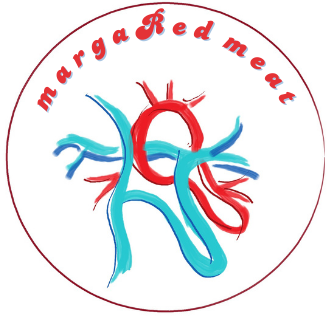
about margaRed meat
Conceived by founder R, margaRed meat was borne of rage at exclusionary academic gatekeeping around, and passion for, social scientific ways of knowing. The commons, or resources accessible and stewarded by all who want to take part, need to include rich stories and holistic ways of thinking and studying , especially:
Anthropology: the holistic, systems-based, comparative, observed (“empirical”) study of humanity through four subfields:
1) society and culture, systems that organize human groups that we learn and pass to others, often in taken-for-granted ways,
2)biology, including genetic diversity, evolution, and primate relatives,
3) linguistics, or language, and
4) archaeology, or the stuff humans leave behind.
Ethnography: a way how to deeply study of humans and their everyday lives, involving long-term attentive hanging out and learning by doing (“participant observation”), interviews, and other activities.
Radical community organizing: group practices of co-creating understanding the root causes of injustice and inequities and changing those problematic conditions.
margaRed meat’s intentions*
We co-create deeply-felt and -researched stories and solutions that get to the heart of human differences and how we heal together. To do this, we use and guide each other on using methods and ideas from anthropology (especially sociocultural), ethnography, and radical community organizing.
margaRed meat’s impacts
We hope these projects, in little local ways, will begin to open more spaces for creating and deepening relationships, and expanding hope, justice, joy, wellness, and understanding for humans and our environments.
*”Mission” feels too colonial. We want to unsettle/decolonize where possible, especially because anthropology was founded in Europe to psuedo-scientifically create and justify racism. Also, note that margaRed meat is not a nonprofit, but rather a constellation of curiosity and labors of love.

Foremother Margaret Mead used anthropology for good. How can we?
“Never doubt that a small group of thoughtful, committed citizens* can change the world; indeed, it's the only thing that ever has.”
*We interpret this category as all human dwellers of Earth.
The best known American public anthropologist, and possibly the most famous anthropologist in general, Margaret Mead, was a misfit in the fairly new field. She was a queer, Disabled woman, mother, partner, and multiple divorceé who struggled in and was never fully accepted into academia as a tenured professor. Her impact exceeded the ivory tower’s boundaries. She translated her research insights into highly readable, ethnographic books for down-to-earth, curious people. She also applied her social scientific training through evaluation work for the US government. Mead famously worked abroad, yet also studied her own society and culture, working domestically. Her work is rarely taught in the classroom. Few folks really know what anthropology or ethnography ARE, never mind how to use them. Let’s change that.
Too clumsy for roller derby but enamored by its raw, punny names, R repurposed the moniker “margaRed meat.” R (she/her/they), a lefty Disabled/mentally ill, neurodivergent White woman, is more of a coastal prairie dog than an “emerging” applied anthropologist, writer, and artist, as they move in and out of practice across fields, skittish. She has BA/MA degrees in anthropology, for what that’s worth. By day for pay, she assists with qualitative research and evaluations at the US’s largest integrated healthcare system. R is also a parent to both a human and a dog, a friend, a spouse, and a resident of unceded Wabanaki lands, also known as Southern Maine.
What’s that symbol?
The logo makes the familiar strange, one of the key goals of domestic anthropology. In this case, the human heart’s blood circulation have been extracted and transformed into a mostly unrecognizable glyph or rune. The heart, as an organ made of muscle, is the pulsing red meat that powers the human body. Yes, this sounds gross AND wondrous. Just as anthropology has four subfields (biological, sociocultural, linguistic, and archaeological), the heart’s four chambers unite as a powerful tool for communal creativity.



